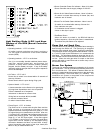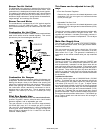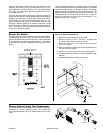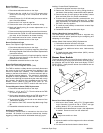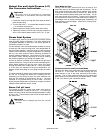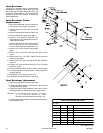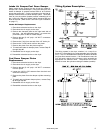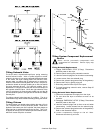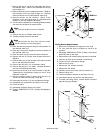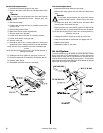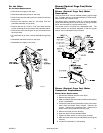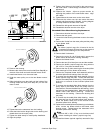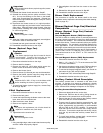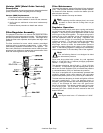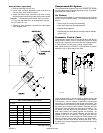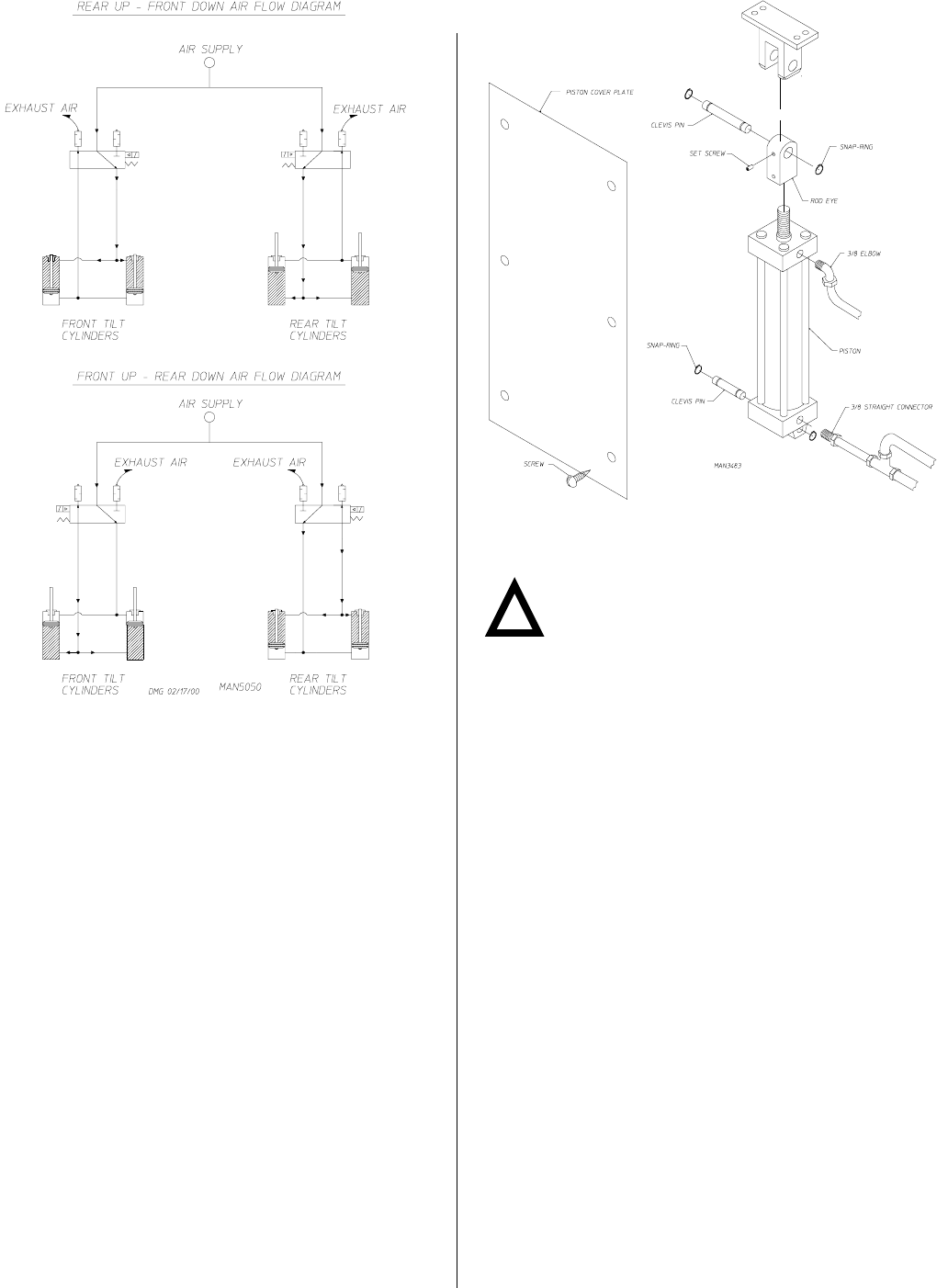
18 American Dryer Corp. 450260-1
Tilting System Component Replacement
Caution
Never service pneumatic components with
compressed air connected. Serious injury may
result.
Tilting Solenoid Replacement
1. Engage EMERGENCY STOP (E-Stop). Discontinue
electrical power to the dryer.
2. Remove panel covering the pneumatic controls.
3. Label the solenoid plugs as an aid when reconnecting.
4. Loosen screws from the solenoid plug.
5. Remove the solenoid plug (take notice of the gaskets).
6. Remove the E-clip by gently prying off.
7. Slide tilting solenoid valve up off of the post.
8. To install new tilting solenoid valve, reverse Step #7
through Step #3.
Tilting Solenoid Valve Replacement
1. Disconnect compressed air supply from the dryer.
2. Tilt, then level the dryer to exhaust as much air as
possible.
3. Disengage EMERGENCY STOP (E-Stop). Discontinue
electrical power to the dryer.
4. Label the solenoid plugs and air lines as an aid when
reconnecting. Loosen screws from the solenoid plug.
5. Remove the solenoid plug (take notice of the gaskets).
Refer to the illustration above.
6. Loosen compression fittings on the air lines.
Disconnect the three (3) air lines.
!
Tilting Solenoid Valve
The dryer uses a 3-position/4-way/5-port, spring centering
double solenoid valve. With no power applied to either
solenoid, the valve is in a spring centered blocked post state.
In this mode, the dryers tilting pistons will remain in their
present state, not being able to exhaust air or receive air.
When the left solenoid is energized with 24 VAC, the pilot air
pushes the shuttle to the right enabling air to flow into the #2
port and exhausts #4 port. On 2-way tilt models, this is
dependent on a supply of external pilot air from the #4 port of
the opposite solenoid valve. When the right solenoid of the
valve is energized, air flows through the #4 port and the #2
port exhausts the pilot air, the right side of the valve is always
internal pilot.
The tilting solenoid valve has two (2) mufflers. The air is
exhausted through these mufflers thereby quieting the airflow.
Tilting Pistons
The tilting piston is a double acting cylinder that has a 5-inch
(12.7 cm) bore and a 14-inch (35.56 cm) stroke. When air is
applied to the bottom port of the cylinder, the piston begins to
extend and air is exhausted through the top port. Then, if air
is applied to the top port, the bottom port will exhaust the air,
which will cause the piston to retract.



